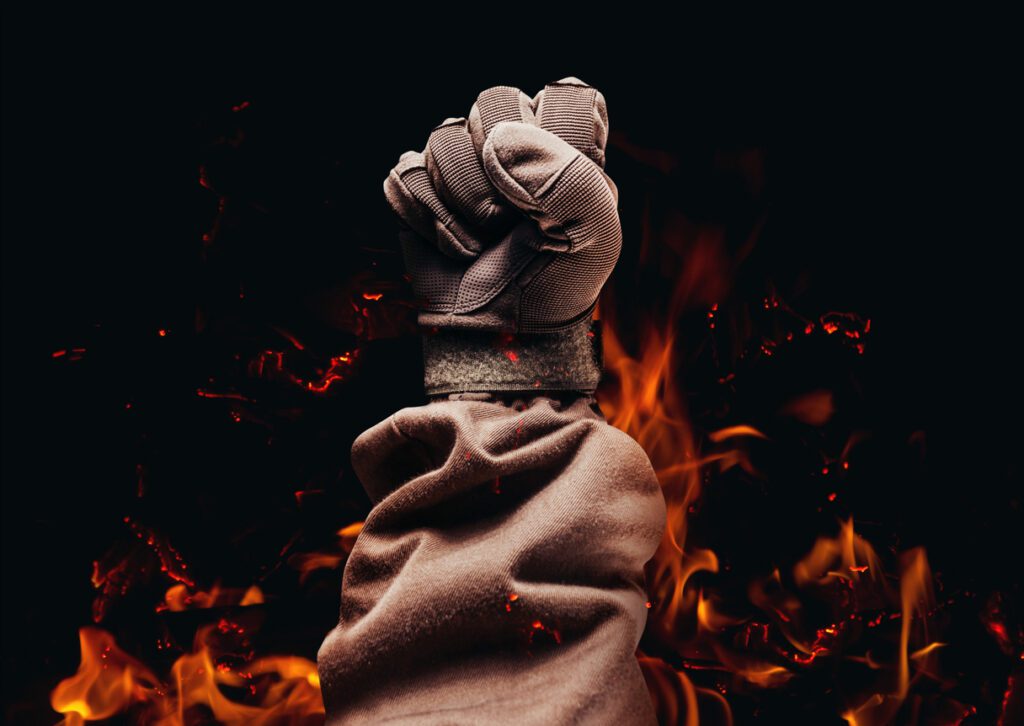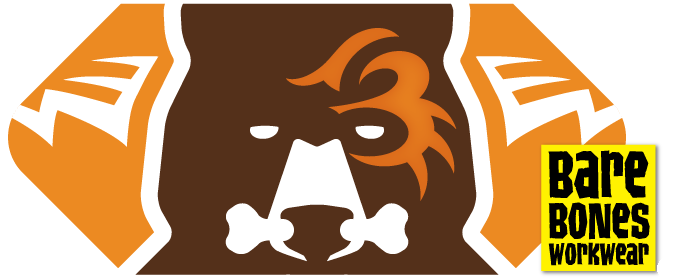Your Comprehensive Guide to Flame Resistant Clothing
 Flame-resistant (FR) garments offer an essential level of safety and protection for electrical workers, structural and wildland firefighters, and anyone operating in a workplace with fire hazards. Specially designed FR clothing protects the wearer from burns caused by electrical arcs, flash fires, and combustible materials. FR clothing has prevented countless severe injuries and saved many lives while providing peace of mind and protection to workers in many dangerous industries.
Flame-resistant (FR) garments offer an essential level of safety and protection for electrical workers, structural and wildland firefighters, and anyone operating in a workplace with fire hazards. Specially designed FR clothing protects the wearer from burns caused by electrical arcs, flash fires, and combustible materials. FR clothing has prevented countless severe injuries and saved many lives while providing peace of mind and protection to workers in many dangerous industries.
Flame-resistant clothing is any apparel designed to protect the wearer from injuries caused by extreme heat and flames. FR apparel resists ignition and self-extinguishes when removed from the ignition source. This protects the wearer from burns from the initial flame exposure and residual heat transfer.
Continue reading to discover more about flame-resistant clothing, how it works, how long is FR clothing good for, and what you can wear while at work.
What is Flame Resistant Clothing
Flame-resistant clothing is designed to resist ignition, prevent the spread of flames across the garment, and minimize the severity of burn injuries. Unlike regular clothing, FR clothing is designed to self-extinguish once removed from the ignition source.
These garments are made from materials that naturally resist burning or melting or are treated with a flame-retardant substance. Some commonly used materials include:
- Nomex. An inherently flame-resistant material made by DuPont, Nomex doesn’t melt, drip, or combust. For those concerned about washing FR clothing, the thermal protection offered by Nomex is permanent and cannot be washed out or worn away.
- Kevlar. Kevlar is inherently flame-resistant and boasts a high tensile strength-to-weight ratio, making it five times stronger than steel. It’s commonly used to manufacture heat-resistant gloves, sleeves, laces, tactical, and other protective apparel.
- Indura. A fire-resistant cotton, Indura is often treated with a flame-retardant, providing it with additional fire-resistant properties. Indura combines the comfort of cotton with the protection offered by less flexible materials.
The type of material used depends on several factors, including the level of protection required, the specific application, comfort requirements, and budget. All these materials comply with various safety standards and regulations; the choice between them comes down to the wearer’s specific needs.
How Does Flame Resistant Clothing Work?
Flame-resistant clothing is designed to provide the critical seconds needed for the wearer to escape an intense fire or combustion scenario. FR clothing resists catching fire; if it does, the garment will self-extinguish once removed from the combustion source. The clothing stifles the fire by cutting off the oxygen supply, thus preventing the flames from spreading further.
While flame-resistant clothing can significantly reduce the risk and severity of burn injuries, it does not eliminate them. High enough temperatures or prolonged exposure can still cause harm. However, wearing FR clothing under these circumstances can be the difference between life and death.
The Types of Flame-Resistant Apparel
Flame-resistant clothing comes in various types and styles, all designed to suit specific job requirements and safety standards. Some of the common types include:
FR shirts and pants
These work clothes are made of flame-resistant material and are designed for daily wear at job sites with a risk of flash fires or electric arcs.
FR coveralls
These one-piece suits provide full-body protection and are commonly used in oil, gas, and chemical industries.
FR jackets and coats
These are worn in colder environments or situations where additional protection is needed.
FR lab coats and aprons
Used in laboratories or food service areas, these garments provide protection in workplaces where a small fire could break out suddenly.
FR boots
Essential for many industrial jobs, some boots are designed to provide foot protection against flame and heat hazards. They often have other safety features, such as slip-resistant soles, electrical hazard protection, and toe protection. Many wildland fire boots comply with or are certified by the National Fire Protection Association (NFPA) for flame resistance
FR accessories (belts, hoods, etc.)
Even accessories can be flame-resistant. FR belts, for example, are made from materials that resist ignition and can help prevent injuries. Similarly, FR hoods provide added protection for the head and neck area, which can be critical in specific high-risk environments.
Choosing the type of flame-resistant clothing most appropriate for your job requirements and safety standards is essential. Always refer to the manufacturer’s guidelines and your workplace’s safety protocols when selecting and wearing FR clothing. How long is FR clothing good for will depend on the material, but it usually remains effective for one to five years.
At BareBones WorkWear®, we carry a wide selection of top-rated flame-resistant workwear brands that meet all common safety and OSHA standards. Ariat Work FR, Carhartt FR, TruNorth, Dirfire, Tecgen, Workrite, Dragon Wear, Bulwark FR, Lapco FR, and Wrangler FR. We also carry boots from Whites, Kenetrek, Nicks, Hathorne, and Danner that are flame-resistant as well.
How to Care for FR Apparel
Proper care and maintenance of your flame-resistant (FR) clothing will determine how long FR clothing is good for while ensuring it retains its protective properties. By following these steps, you can keep your FR apparel in top shape:
- Follow the manufacturer’s instructions: Always follow the care instructions provided. These guidelines are based on the materials and treatments used in the garment’s construction and provide the best advice for maintaining its flame-resistant properties.
- Washing FR clothing. How to wash flame-retardant clothing without removing the protective treatment depends on the material and what you use to clean it. While many flame-resistant and flame-retardant garments can be machine washed, avoid using bleach and other oxidizing agents, which can weaken the flame-resistant properties. Also, it’s best to avoid fabric softeners and other additives, as these can coat the fibers and potentially reduce their flame resistance. Use mild detergents and wash in warm water for the best results.
- Drying. Unless otherwise specified by the manufacturer, you can usually machine dry FR garments on a low or medium heat setting. Avoid over-drying, as this can lead to excessive shrinkage and weaken the fibers.
- Repairs. If your FR clothing gets ripped or damaged, it must be repaired immediately to maintain its protective properties. Use FR material for patches and FR thread for sewing to ensure the entire garment remains flame-resistant.
- Embroidery. BareBones WorkWear® specializes in embroidering FR thread into uniforms, ensuring compliance and enhanced flame-resistant safety.
- Replacement. FR clothing doesn’t last forever. Over time, even with proper care, these garments will lose their effectiveness. If you notice any signs of deterioration or if the garment has been exposed to a fire or electric arc, it’s time to retire it. Always keep a close eye on the condition of your FR clothing and replace pieces as necessary.
Good care and maintenance practices will not only save you money in the long term by extending the life of the clothing, but they will also ensure that the protective qualities of your apparel remain effective, keeping you safe in hazardous environments.
BareBones WorkWear® Has Your FR Needs Covered
Your safety in hazardous environments hinges on the quality of your protective apparel, and choosing the right brand is crucial. At BareBones WorkWear®, we offer a wide selection of top FR brands known for their quality, durability, and commitment to safety. Whether you need FR coveralls, boots, pants, belts, or safety vests, or you require FR embroidery, BareBones WorkWear® has you covered.
We take pride in helping our customers stay safe and confident while providing them with the reliable flame-resistant clothing they need at the lowest possible prices. Visit any of our eight locations seven days a week to get the right gear for your job.

